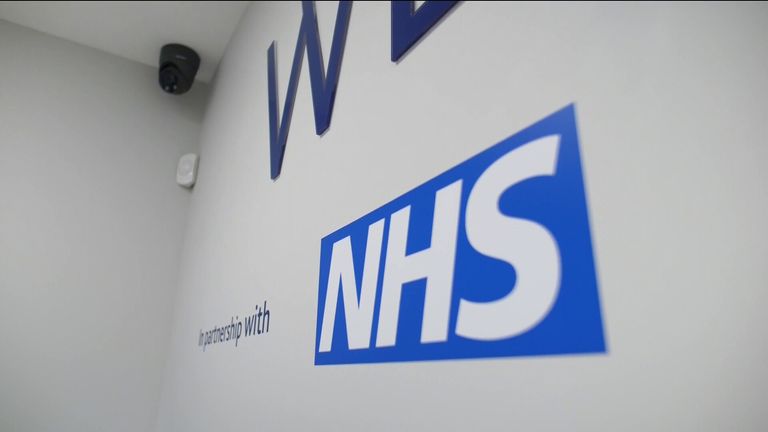The number of people waiting to start routine hospital treatment in England has reached a new record high.
In its latest release of data, NHS England said 7.6 million people were waiting to start treatment at the end of June, up slightly from 7.5 million in May.
It is the highest number since records began in August 2007.
By the end of June, 383,083 people had been waiting more than 52 weeks to start routine hospital treatment, down a little from 385,022 at the end of May.
The number estimated to have been waiting more than 18 months was 7,177 at the end of June, compared to 11,446 at the end of May.
Both the government and NHS England set an ambition of eliminating all waits of more than 18 months by April this year.
However, that excluded exceptionally complex cases or where patients chose to wait longer.
Strikes by junior doctors have had a considerable impact on elective appointments and procedures.
Three days of junior doctors’ strikes in June led to 106,120 postponements, NHS England said.
It added: “To date, around 778,000 hospital appointments across the NHS have been rescheduled due to strike action.”
Consultants have also been walking out, while junior doctors are due to begin their fifth round of strikes on Friday morning.
The number of patients in England with suspected cancer who have been waiting more than 62 days since an urgent GP referral has dropped slightly.
It was 21,529 in the week ending 2 July, down from 24,180 in the week ending 4 June.
In September last year, it was almost 34,000.
About one in seven on that list do have cancer and are waiting for treatment, while the majority do not have the disease.
In terms of A&E, the number of people waiting more than 12 hours – from a decision to admit to actually being admitted – was 23,934 in July, down 10% from June, when it was 26,531.
It hit a record 54,573 in December 2022.
Some 74% of patients were seen within four hours in English A&Es last month, up from 73.3% in June.
In December it was down at 65.2%.
Read more:
More patients to be able to skip NHS waiting lists – if they can travel for treatment
NHS must embrace robotics and AI to be fit for future, surgeons warn
In July, the average response time for ambulances in England dealing with the most urgent incidents – defined as calls from people with life-threatening illnesses or injuries – was eight minutes and 21 seconds.
That is down from eight minutes and 41 seconds in June. However, it is above the target standard response time of seven minutes.
Rishi Sunak made cutting waiting lists one of his priorities for 2023, saying in January that “lists will fall and people will get the care they need more quickly”.
But strikes are making that “more challenging”, he has admitted.
Siva Anandaciva, chief analyst at health think tank The King’s Fund, said the NHS is “under significant strain” and the “latest figures paint a grim picture”.
He added: “Tomorrow, thousands of NHS staff will again be on strike and these figures are now starting to show the impact industrial action is having on the NHS’s ability to clear the backlog.
“The longer the strikes go on, the less and less likely it is that the prime minister will meet his pledge to reduce waiting lists.
“For the sake of patients, it is imperative that all parties get around the table to resolve this issue. This emphasises how staffing issues make or break almost any target set for the service.”

